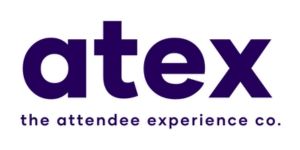When is the best time to deliver training?
)
With training on the agenda, Diane Waldron, sales and marketing director at The QEII Centre and The Meetings Show Advisory Board member looks into when and how is best to deliver it...
The pandemic has created many changes within employment and as a result, many people are now looking to re-train, or brush up on skills to return to, or start in a new workplace.
Individuals and organisations in the meeting and event industry will be among those both delivering training and receiving it, so the results of some research undertaken by the QEII Centre into when and how it is best delivered to ensure optimum engagement will no doubt be useful.
According to the results of the survey of more than 500 professionals responsible for delivering training, holding a session mid-week and mid-morning offers the greatest chance of engagement among attendees, with trainers opting for Wednesdays for courses, closely followed by Tuesdays and Thursdays.
Setting aside half a day for training was the most popular choice for almost half (47%) of respondents while 28% said they ran courses over a full day. Just 22% said that two hours, or less was the average time needed for training.
Good news for venues with training rooms - to keep delegates fully focussed on learning, it seems holding a training event off-site from the business and away from distractions was preferred by most facilitators with 91% claiming it was either essential or helpful.
However, while there is overwhelming evidence that off-site learning is more productive, the results can vary depending on environmental factors related to a training venue.
Trainers said their biggest frustration with venues selected for training is trying to conduct a session in a room that is either too big, or too small for the number of delegates attending, or has bad lighting – creating an atmosphere that is too dark or too bright.
Instead, the perfect training environment has access to fresh air, an inspiring view and a modern, well-decorated surrounding. Adjustable temperature controls, natural daylight and a private space lead the other remaining top priorities.
And to stimulate effective learning, layout is key. There has not been a shift towards more radical approaches as just 3% believe asking delegates to stand for a session is the most effective format.
Instead, the equally most popular room set ups to engage delegates were the more traditional table groups with chairs facing forward, or enough room to sit as well as facilitate group working, which was closely followed by a horseshoe of tables with chairs.
While clocks on the wall serving as a constant reminder of the time were a low priority, trainers said a schedule for pre-determined breaks with catering served in a separate room is the best way to keep delegates fuelled. This was preferable to flexible breaks where refreshments are ready in the room for when energy levels dip.






































